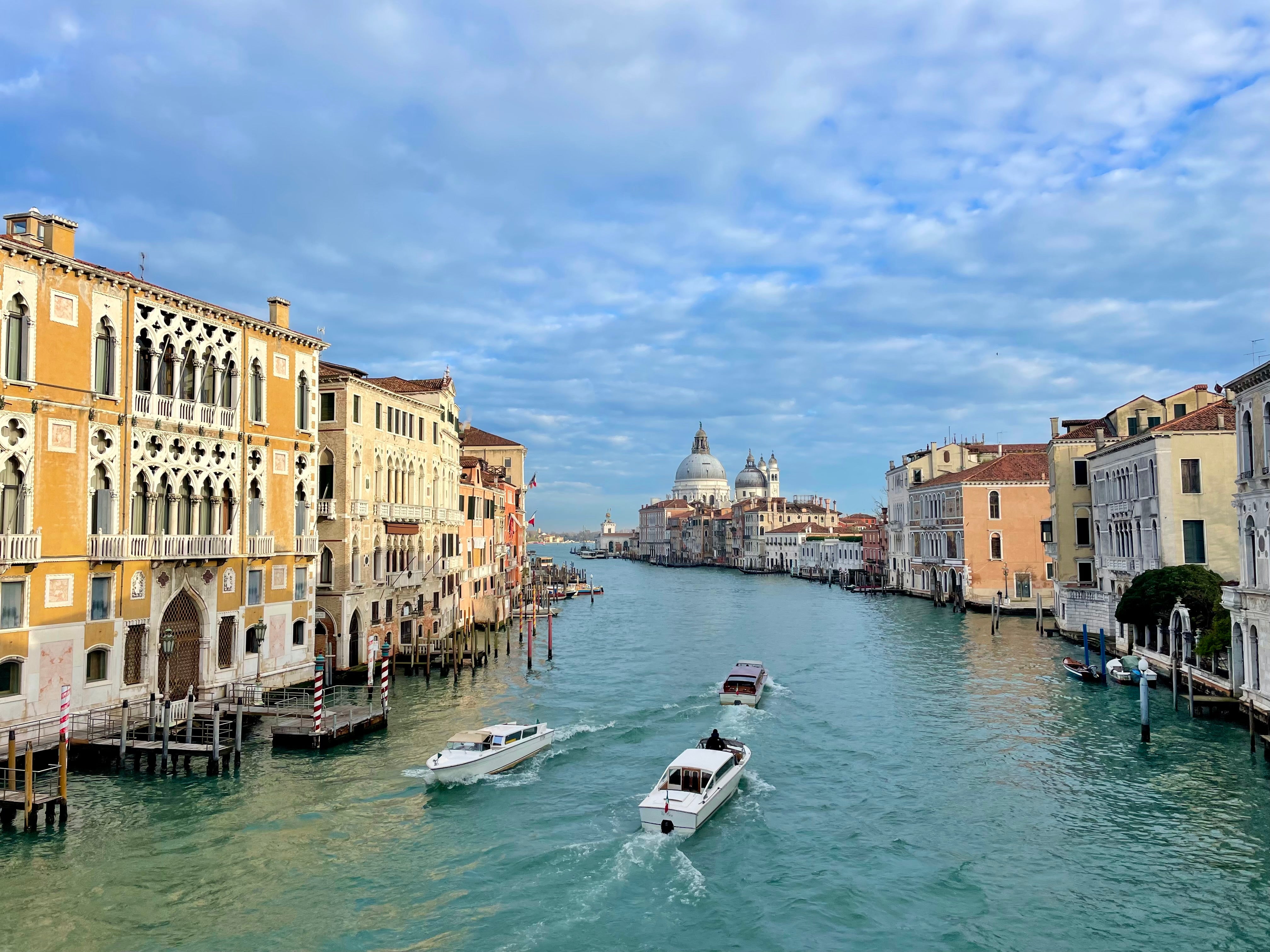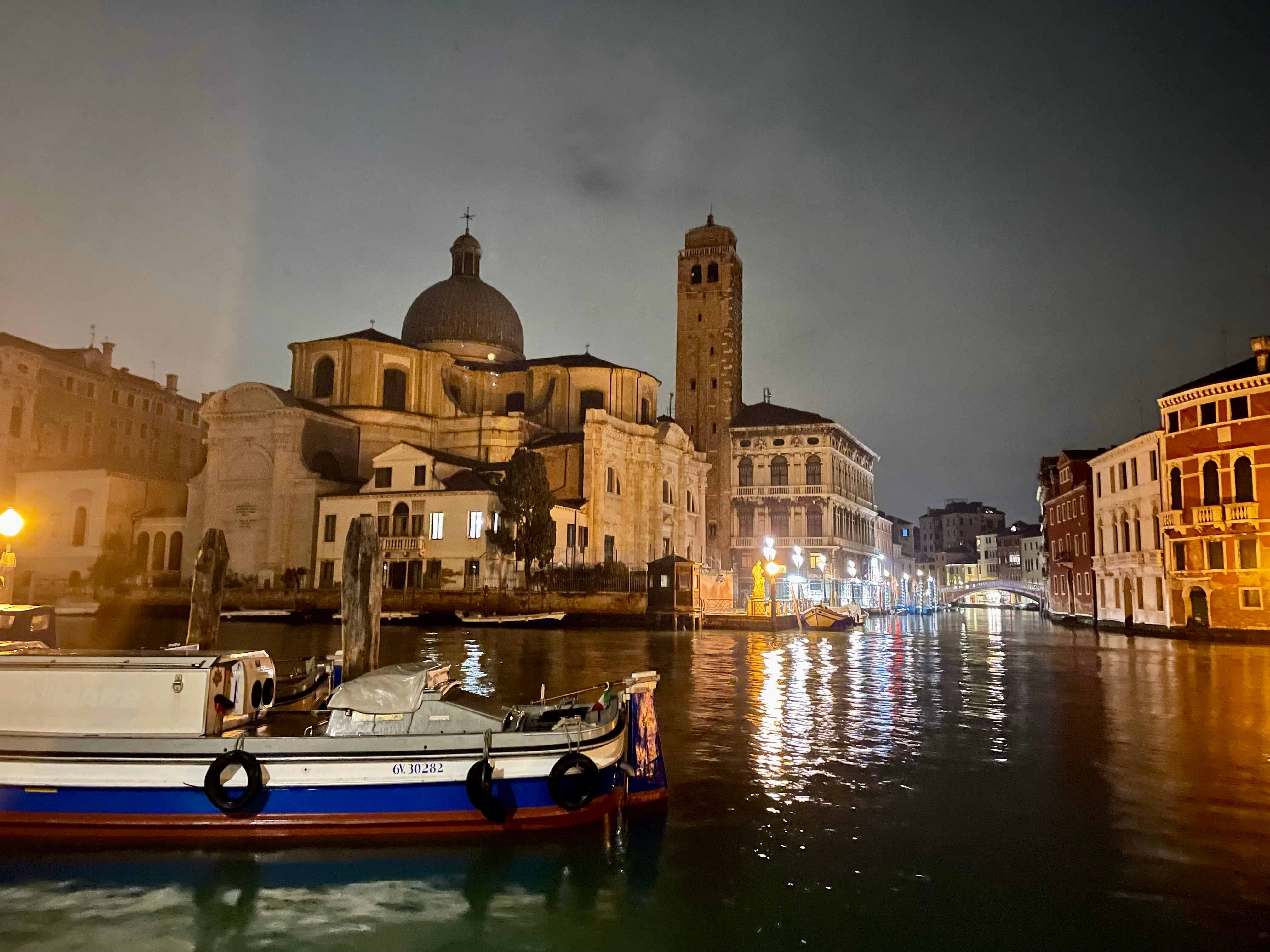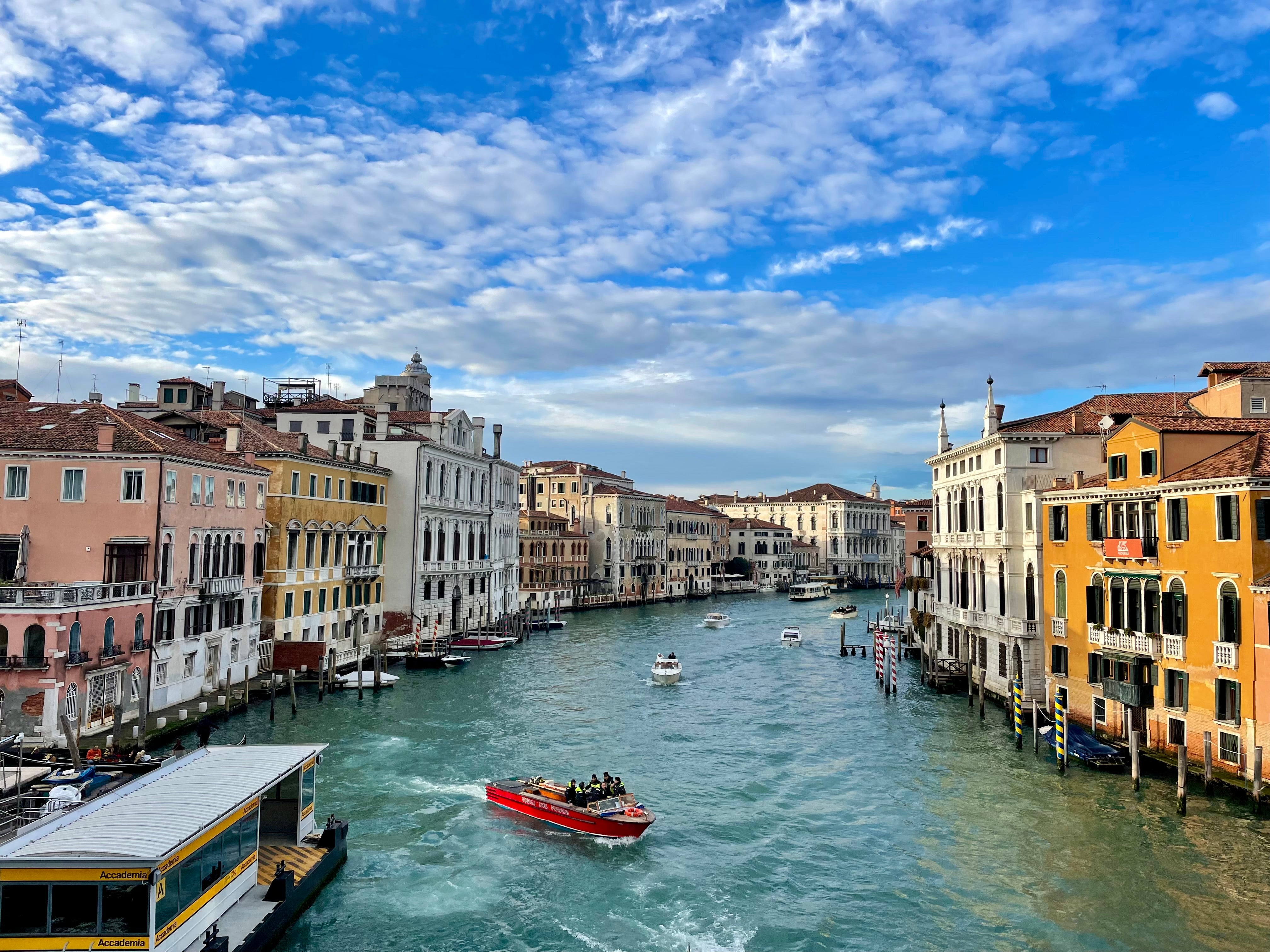The Independent's journalism is supported by our readers. When you purchase through links on our site, we may earn commission.
Venice in winter: Why you should wait until the off-season to visit Italy’s floating city
Keen to avoid crowds of tourists and inflated prices, Annabel Grossman took a trip to La Serenissima in December – and discovered the magic of the Italian city in winter


Your support helps us to tell the story
From reproductive rights to climate change to Big Tech, The Independent is on the ground when the story is developing. Whether it's investigating the financials of Elon Musk's pro-Trump PAC or producing our latest documentary, 'The A Word', which shines a light on the American women fighting for reproductive rights, we know how important it is to parse out the facts from the messaging.
At such a critical moment in US history, we need reporters on the ground. Your donation allows us to keep sending journalists to speak to both sides of the story.
The Independent is trusted by Americans across the entire political spectrum. And unlike many other quality news outlets, we choose not to lock Americans out of our reporting and analysis with paywalls. We believe quality journalism should be available to everyone, paid for by those who can afford it.
Your support makes all the difference.A matter of minutes after arriving in Venice, I was asking myself why it had it taken me this long to visit. I’d spent summers wandering around Tuscany, returned to Rome since my teens and roamed the Dolomites twice this year alone, but until this winter Venice had firmly been on my no-go list.
And for good reason. It’s not been a great few years for Venice tourism: in 2023 we learned that the city is introducing a €5 tourist tax for day-trippers; we read stories of travellers being ripped off when buying coffees on the Grand Canal, or acting like idiots in gondolas. Plus we’re constantly being reminded that Venice is sinking (figuratively and literally) under the strain of tourism.

The sense of a beautiful city being broken by too many visitors had in all honesty put me off. I’d spent a painful 24 hours in Dubrovnik this past summer where I’d jostled through the city streets shoulder to shoulder with tourists who had just poured off a cruise ship, and it left me faintly depressed at the state of overtourism.
But it was not a broken city choked with tourists that I found in early December. Instead, the streets were quiet, the Ponte Rialto softly sparkling, the locals warm and chatty, and the restaurants reasonably priced. Yes, it was cold – although significantly warmer than the UK – but nothing that a decent coat and sturdy footwear couldn’t handle.
Films such as Don’t Look Now and Death in Venice may make you feel that the city has a sinister or decaying feel in the winter, but in reality it’s cosy, welcoming and heartachingly beautiful. The city glistens year-round – in the sun, cold, mist, and even the rain. But in the drizzle, when locals are snuggled up in bacaris and St Mark’s Square is empty, the floating city is nothing short of magical.

In response to concerns about the conservation of Venice, a number of organisations have been set up to preserve the city’s history and protect its future. US nonprofit Save Venice has a particular focus on the artistic heritage of Venice and has restored more than 2,000 artworks since 1971, including those by the likes of Titian, Veronese and Tintoretto.
Although aware of the strain that mass tourism can put on the fragile city, Melissa Conn, director of the Venice Office of the organisation, insists that we should continue to visit the city to “reflect on its glorious past and recognise the incredible impact Venice had on Western civilisation”.
Read more on Italy travel:
She told me: “Venice still needs tourism to survive, albeit a tourism that is thoughtful and controlled.” In fact, Melissa emphasised that Venice is indeed a city that wants to be visited and admired; it’s something that’s ingrained in its history.
She explained: “Venice needed to prove its worth in comparison to the older cities such as Rome and Constantinople, and establish itself as a leading city for commerce and trade. City officials entertained foreign ambassadors and merchants on a regular basis in order to enhance the reputation of the city. The splendors of Venice were made to show the city’s power, wealth and religious devotion.”
So yes, we should keep visiting Venice. But avoid day trips, take your time, and maybe give it a go when the crowds disperse for winter.

What to do
When you come to Venice, find the city that works for you – whether that’s wandering the streets and dipping into churches, wrapping up warm and exploring the islands, or just cosying up in bacari or osterie with pasta and wine. Here are some of the most enjoyable ways to spend a winter day in Venice.
Explore the churches
One of the most affordable ways to experience some of the best art and architecture Venice has to offer is by visiting its churches. A Chorus pass costs just €14 and gives you access to 18 churches across the city (you can also opt for the €7 pass to see three churches or visit each church at €3 a go). It’s good value and a nice way to structure a walk through the various neighbourhoods.
Make sure you include San Sebastiano in the charming Dorsoduro district. The church is the best example of the restoration works by Save Venice – and the art is nothing short of jaw-dropping. It’s something of a monument to the great Italian painter Paolo Veronese, but you’ll also find works by Titian, Andrea Schiavone, Palma il Giovane, Jacopo Sansovino and Alessandro Vittoria. After your visit, pop around the corner to the very cosy Trattoria Anzolo Raffaele, where you can enjoy an excellent and very reasonably priced meal.
Take in some art
Beyond the churches, there’s no shortage of world-class art in Venice, and a wet or windy day can we well-spent exploring the various galleries, collections and museums. The Peggy Guggenheim museum is located in the socialite art collector’s former home on the Grand Canal and showcases her extensive – and impressive – personal collection. This includes masterpieces by some of the greats, including Picasso, Jackson Pollock, Henry Moore, Mark Rothko and Salvador Dali.

Wander around the Palazzo Ducale
Often choked with tourists in the summer, I found the Palazzo Ducale – the former Doge’s residence and seat of Venetian government – to be pleasingly quiet in early December. Admiring the Gothic architecture is a far more pleasant experience when not standing in queues or jostling for space. Wander through the courtyards, around the Doge’s apartments and up the Scala d’Oro, then head down to explore the prisons, from where the accused were taken across the Bridge of Sighs to the courts. At the end of your visit, you’ll find a cosy cafe where you can stop for a pastry and cappuccino before heading back outside.
Take a trip to Burano
There are a number of trips you can take to the small islands around Venice, but my favourite is the colourful community of Burano. It’s known for the brightly painted houses that line the streets and canal, as well as lace-making. You can easily spend a couple of hours wandering around the shops and grabbing coffee or lunch at one of the restaurants.
On the main street you’ll spot the distinctive leaning bell tower of St. Martin’s Church. It’s actually worth having a look inside, and the church only asks for a donation for entry. Also make sure you seek out Bepi’s house, arguably the prettiest and most colourful building on the island. If you have a whole day free, you may also want to stop off at Murano, which is famous for glass blowing, and the tiny island of Torcello. Both of these are on the same water taxi route and included in the price of your ticket.

Just walk… or go for a run
I firmly believe that you could spend a couple of days in Venice doing nothing but wandering the streets and have a wonderful trip. There’s not really any need to join a big tour group; Venice is a safe and walkable city, and even if you get lost among the tangle of alleys and canals, it’s not hard to find your way back to a distinctive landmark. Cross the Grand Canal at the beautiful wooden Ponte dell’Accademia, stroll down to the Rialto market, explore the former Jewish Ghetto, or grab an espresso at the Pasticceria Chiusso.
The one tour I would recommend is the Sunrise Running Tour, which can be booked through the Avani Rio Novo Venice hotel. Venice local Denis will take you for a jog around the various neighbourhoods, winding through the streets, over bridges and along canals.
It’s not a bad idea to do this tour on your first day in the city, as Denis will point out some of the best sights to visit, as well as excellent places to eat. It’s an early start (I was picked up for my tour at 7am), but the sunrise on a cold Venice morning is spectaular, and the tour ends with a croissant and coffee at one of the local cafes.

Where to stay
The Gritti Palace
For traditional Venetian splendour, you cannot beat the Gritti Palace. Occupying arguably the most enviable location of any Venice hotel, perched on the Grand Canal directly across from the Salute church, the Gritti offers splendid city views. Staff are friendly and knowledagable, the service is impeccable and the food is excellent. Rooms feel palatial (a balcony overlooking the canal is the ultimate luxury) and the lobby is decked out beautifully for Christmas. If money is no object, it should be your top choice for a winter Venice stay.
Ca’ di Dio
Steeped in Venetian history dating back to 1272, Ca’ di Dio is now a rather gorgeous five-star hotel that has managed to retain its character while also providing all the modern touches you could want from a luxury stay. In its former iterations, the hotel was a hostel for pilgrims on their way to the Holy Land and then a hospice for women, and there are nods to this heritage throughout. It sits at the entrance to the Arsenale district, right by the waterfront and just a short stroll from St Mark’s Square. Via Garibaldi is a few minutes’ walk along the water, where you can find some of the best local dining in Venice. But it’s worth spending a night at the hotel’s VERO restaurant, where you can enjoy typical Venetian dishes made using local produce – both food and wine is excellent and the service is impossible to fault.
Avani Rio Novo Venice
The Avani Rio Novo Venice is conveniently situated just a short walk from the bus and train stations in the quieter, yet equally beautiful, streets of the Dorsoduro district. It’s got a more modern feel than other hotels in the area and offers a number of experiences for visitors, including Denis’s Sunrise Running tour mentioned above. I’d give the restaurant a miss (there’s no shortage of very reasonably priced bars and restaurants in the vicinity), but the rooms are comfortable and well-priced for the location.
Read more of our reviews of the best hotels in Venice

Where to eat
Despite what you may hear, eating out in Venice doesn’t have to be a wildly expensive affair. If you do choose to eat and drink on the Grand Canal or around St Mark’s Square, accept that you’ll likely pay a little more, but it may be worth it for the location.
For cheap eats, head to the Dorsoduro neighbourhood. This district is where you’ll find the majority of Venice’s university buildings and it’s a favourite among students. Restaurants and bars are considerably more affordable than elsewhere in the city and there’s a relaxed bohemian vibe. Over in the Castello neighborhood, the restaurants along Via Garibaldi serve traditional Venetian dishes (this is one of the areas where you’ll find plenty of locals), and are also a great place to drink into the evening.
When to go
I visited Venice in early December and I think I found the sweet spot. September and October can still feel like high season, but by November the city will start to seem a lot quieter. In January, certain hotels, bars and restaurants may close down, and in February the crowds are back for Carnival. I’d also recommend visiting mid-week (even in winter the weekends can feel a little busy), preferably Monday to Wednesday.

How long to stay
You don’t really need more than three days in Venice; this is enough time to get a feel for the city and see the major tourist attractions. But if you can spend a week, it’s worth it. This gives you time to settle into the rhythm of the city and enjoy it at a slower pace.
How to get there
Major airlines including British Airways, easyJet, Wizz Air and Ryanair all fly to Venice Marco Polo direct from London. Flight time is around 2hr 15m. EasyJet also flies direct from Edinburgh with a flight time of around 2hr 30m.
Depending where you’re staying, you can take the bus or a taxi into the city and walk to your hotel. Usually the preferable option is by water; this just feels like the right way to arrive in Venice. You can take a private water taxi but the Alilaguna public transport is a more affordable and very efficient option. The boats run from the airport to San Marco every 30 minutes and costs €15 one way (there are various stops around the city so ask on the boat or at your hotel in advance so you know where to get off).
Join our commenting forum
Join thought-provoking conversations, follow other Independent readers and see their replies
Comments